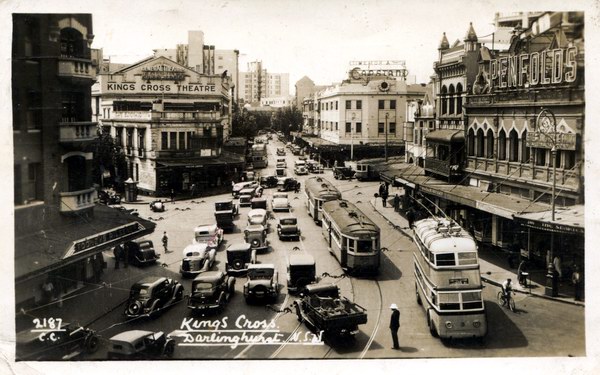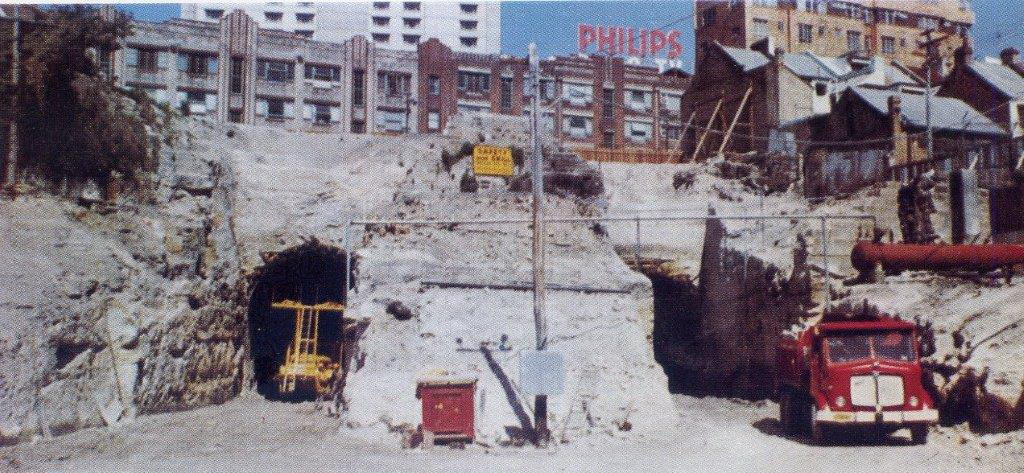Page created Friday 6th March, 2009 - HTML 4.01 Transitional Last modified/checked: Tuesday, 23rd April 2019 After almost 100 years of promises and political manoeuvering, Sydneys' Eastern Suburbs Railway (ESR) was at last a reality in June 1979 and built at a cost of approximately $168 million. Of this amount, some $2 million was invested in Australias' first, and at the time, one of the worlds' few automatic fare collection systems. Before detailing this system it is worth giving some background information on the ESR as by Australian standards this was no ordinary railway project. Numerous plans for railways into Sydneys' eastern suburbs had been put forward. By the 1920s this was fast becomming Australias' most densley populated region. It is likely that from the railway department's point of view the various route proposals that might have looped through and branched into this region would have been quite impracticle to operate. This is particularly so of any proposals prior to the commencement of electrification in 1926. The numerous tunnels and viaducts vital to all these proposals would have been substantial - and very costly. It suited the railway department as much as the N.S.W Government that most of the suburban train services simply operated over the metropolitan portion of the trunk country rail routes that converged on Sydney. It wasn't until around 1930 that the N.S.W government was prepared to construct new, speculative, purely suburban railways into undeveloped territory. The sprawling eastern suburbs could not likewise be so easily tapped in to. As well, the region was well served by electric street tramways and the construction of a railway was viewed as duplicative. It is not surprising that the railway to Bondi Junction was ultimately built on a diagonal course through the most densely populated swathe of the eastern suburbs; an area which until the 1950s had been served by two intensely worked routes of Sydneys' once immense tramway system. 
Kings Cross as it was in a postcard mailed in 1941. R class trams and Q type trolley buses are clearly visible. This area was a heavy source of patronage for these long defunct forms of street transport. Much later the Kings Cross station would be built deep underneath the area where the picture theatre stands. It wasn't until immediately after the second world war, with public transport patronage still encouragingly high, that major works began in Redfern as well as tunneling under the city for a railway towards the east. By the mid 1950s commitment to this project had petered out in favour of scarce funding for more pressing needs such as completion of the city railway through Circular Quay (1956). In hindsight the tunneling was perhaps extremly fortuitous as the later construction of a railway from scratch at balloning 1970s cost may have ruled it out altogether? My the mid 1960s, with Sydneys' trams a memory and the army of replacement buses considered a scourge, it was advice from American consultants that identified a railway to the eastern suburbs as a justifiable proposition. Thus was born for Sydney the concept of buses feeding into a carefully positioned and purpose built mass transit type railway. Around this time there was one further and significant occurence. The first cars of a fleet of double deck suburban railway carriages arrived in 1964. Within eight years construction of complete self propelled train sets of this design began en mass. These had a profound effect on Sydneys' railways and made the pursuit of a railway in to the eastern suburbs a more practicable proposition. For more detail on the ESR, the original PTC brochure dated July 1977 can be seen here. An updated, but similar brochure was issued in October 1978. |
|
|


